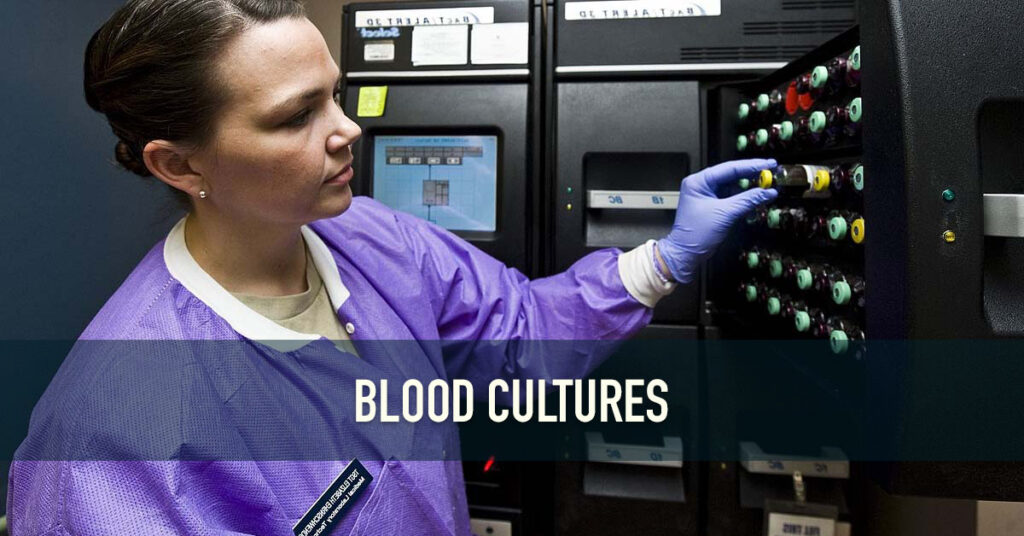Need help? Contact us : secretary@actscp.co.uk
Blood Cultures

A blood culture is a microbiological culture of a peripheral blood sample. As blood is usually a sterile environment, culturing can show the presence of a systemic infection, such as septicaemia. If the culture is positive, the causative micro-organism can usually be identified, and antibiotic sensitivity testing performed.
The process of collecting blood for culture can be divided into four steps; explanation and consent, preparation, procedure and aftercare. We shall now look at these stages in more detail.
Explanation and Consent
- Confirm the patients identification
- Check full name, DOB, and hospital number
- Confirm against patients wristband
- Explain rationale for the procedure
- Describe the procedure
- State the importance of the procedure in identifying a bacteraemia
- Explain the risks of the procedure to the patient
- Infection (can be minimised by sterile equipment and aseptic non-touch technique)
- Structure missed or another structure hit (nerve, artery, or bone)
- Haematoma or phlebitis may develop
- Ask about relevant past medical history
- Blood clotting disorders or medication that affects blood clotting (e.g. warfarin)
- Arterio-venous fistula present
- Previous breast surgery or lymph node removal
- Ask about needle phobia
- Ask about preferred location for puncture site
- Antecubital fossa or dorsum of the hand are the preferred locations; avoid other sites if possible (especially femoral stabs) due to high risk of contamination
- Only take blood for culture through a peripheral cannula if it is not possible to collect from a fresh puncture site
Check that the patient is happy to go ah
